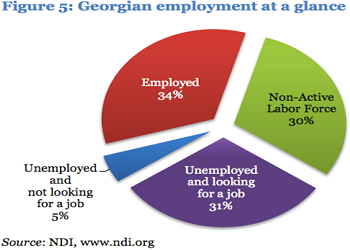- Details
The Government of Georgia (GoG) is currently preparing a new Local Self Government Code that will introduce significant modifications to the structure of local-self-governments (LSGs) in Georgia. Currently, Georgia has 63 LSGs (excluding Tbilisi and those areas not under Georgian control). If the proposed law is approved in Parliament, it would increase the number of LSG units dramatically: according to the GoG, by 2015 there would be close to 120 LSGs, and by 2018, approximately 240 LSGs overall. At time of writing, the draft Code was still under discussion by the GoG, prior to its introduction to Parliament.
- Details
The main goal of the study was to analyze the existing early learning models, relevant funding schemes, and potential funding strategies to expand preschool enrollment from the current 46%1 to universal coverage of 100%. The study is based on a detailed analysis of the Georgian preschool education sector’s institutional foundations, as well as its demographics, legal, economic and financial conditions. Since independence, Georgia’s preschool education sector has gone through several successive phases. It declined dramatically throughout the 1990s but in 2001 it began to gradually expand. This ended with the decentralization reform of 2005. Currently, the Net Enrollment Rate (NER) in public preschools stands at 42%2, while 4%3 of children are in private care. Although the total preschool population shrank relative to 1990, the preschool NER today is higher than it was during the pre-independence period. moreover, almost half of all 5 year-old children are enrolled in primary schools4. Nevertheless, about 40%5 of 3 to 5 year-old children are not covered by any EL or primary education institutions.
- Details
After the break-up of the Soviet Union, Georgia went through a process of civil war and economic collapse. Official estimates suggest that Georgia’s GDP shrunk by more than 70% between 1990 and1994.Internal displacement and migration, primarily to Russia, were essential to the nation’s physical survival during this period. Three distinct phases of Georgia’s external migration may be distinguished.
Based on data from the last two censuses held in Georgia, between 1989 and 2002, about 1 million emigrants permanently left Georgia (roughly 20–25% of the total population). This figure includes a very large number of non-Georgian ethnic minorities, including Jews, Russians, Armenians and Greeks. Mansoor and Quillin (2007, p.33) suggest that Georgia holds third place (after Albania and Kazakhstan) among the 25 East European and FSU nations in the share of population lost to emigration.













